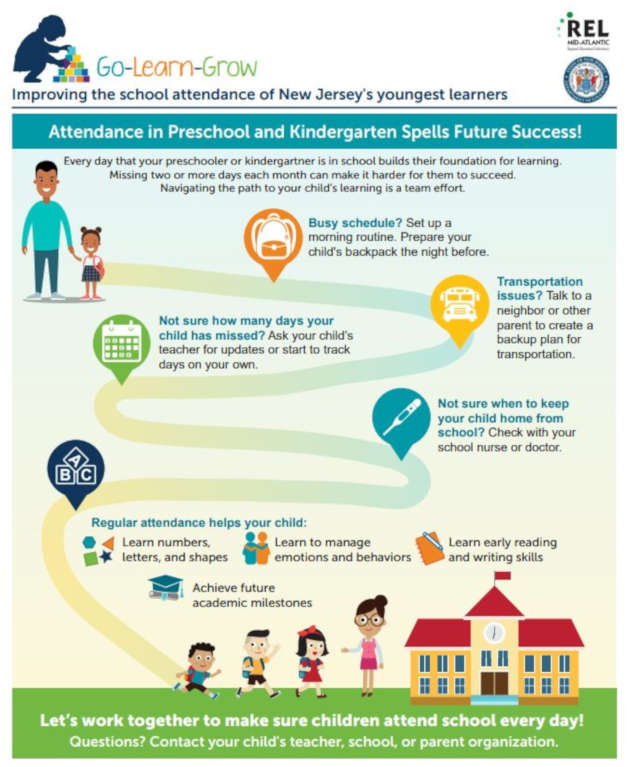Toolkit Tackles Pre-K and Kindergarten Chronic Absenteeism
- By Dian Schaffhauser
- 01/08/20
New Jersey defines chronic absenteeism as missing 18 days or more each school year. And it's especially high for pre-kindergarten and kindergarten children compared to other grade levels, according to the state's Department of Education. Among kindergartners, for example, chronic absenteeism hit 11.4 percent during the 2015-2016 school year.
As a new report laid out, missing that much school leads to poorer outcomes for those students, who are "more likely to miss important academic milestones" and lag behind peers in their social-emotional development. One study cited in the report found that a quarter of students who were chronically absent in those earliest years ended up being held back in later grades. And in New Jersey they were more likely to come from disadvantaged groups, including children of color, those living in poverty, English learners and students with disabilities.

To counteract chronic absenteeism, the agency worked with the U.S. Department of Education's Regional Educational Laboratory (REL) Mid-Atlantic to develop a toolkit of resources and handouts that districts and schools can use to boost school attendance for the youngest learners by reaching out to families. The REL is one of 10 in the country that conduct research and training to support a more evidence-based education system.
Besides the report, "Strategies for Improving Attendance in Pre-Kindergarten and Kindergarten," the toolkit includes:
-
Three fact sheets to help educators and other school staff understand the problem;
-
An infographic and a one-page handout in English and Spanish for distribution to families; and
-
A slide deck that teachers and administrators can use in presenting to families.
The first step is for schools to understand the reasons for absenteeism. The report suggested several ways to do this:
-
Encouraging teachers to promote a 24-hour call-in line to parents to share reasons for their child's absences and using personalized text messaging, emails or phone calls to ask how they can help;
-
Having schools designate parent representatives who can connect with non-English speakers about their challenges; and using social workers to schedule check-in meetings with families who seem to be struggle the most; and
-
Pushing principals to engage with community leaders to learn more about what challenges the families in their area are facing.
The report, which includes samples of all the other materials, is openly available through the REL Mid-Atlantic website. Individual downloads of the various resources are also available on the REL website, as is an on-demand webinar covering use of the toolkit.
About the Author
Dian Schaffhauser is a former senior contributing editor for 1105 Media's education publications THE Journal, Campus Technology and Spaces4Learning.